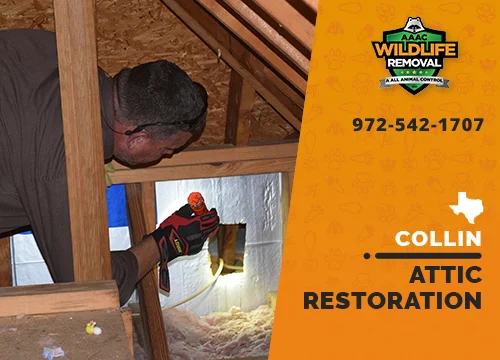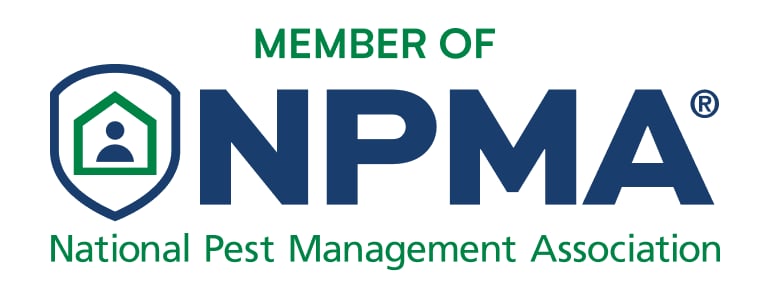How We Restore Your Attic
Although they are not able to chew through insulation material, they can tear it apart. The insulating material is more than just bedding. Animals that tear at your attic’s walls will make their homes in these holes, leaving behind their own contaminants such as urine and feces. These areas are also less efficient at insulating air, allowing for air to escape or enter. This can lead to costly repairs. Here are some steps to follow when attic restoration is completed.

Scoop out Larger Feces Clumps
The first step in any attic restoration project involves removing larger feces from the attic. This can be done using tools and containers that are secure. To remove the feces on the walls and ceilings we use a long-handled, flexible tool. We soak any dropped materials that are stuck to hard surfaces or dried in water and then remove them using a wire brush.
AAAC technicians use an extended handle tool to climb onto the roof of your home to find high-risk areas where squirrels and rats often leave feces. It is possible that large quantities of droppings are needed to be removed from rafters and the eaves by the technicians.

Vacuum Small Feces
The next step in any attic restoration project is to vacuum small rodent feces pellets out of an attic to decontaminate them. Mice, rats, and other forms of rodents leave behind large amounts of tiny feces that can only be removed using this method. AAAC uses a specialized machine equipped with a long enough tube that can reach every corner of your attic. It has an extra-long, powerful vacuum tube, high-speed suction, and HEPA filter that removes animal hair and droppings. AAAC also uses a special brush attachment to reach tight areas such as corners or near the roofline.
AAAC uses a UV lamp to locate small feces found in attics. The UV light will show black dots where there are feces from animals like rats, bats, or raccoons.

Air Duct Cleaning & Repair
AAAC Wildlife Control offers duct repair and restoration services. This includes removing animal hair, droppings and urine from the ductwork. AAAC uses a special tool for cleaning the inside of the ducts. Once the cleaning is complete, we can apply a disinfectant to the ducts in order to kill any remaining bacteria and viruses.

Decontaminate the Attic
After the removal of the animals, the most important part is the cleanup of the attic. This is an important step in the restoration process. It’s done to protect your family from any microbial pathogens that could cause harm if inhaled.
AAAC Wildlife Removal uses special ultraviolet light to detect areas that are contaminated with rodent droppings. The technicians then use a disinfectant spray for cleaning any areas or surfaces that are affected by animal droppings.
AAAC Wildlife Removal will fog your attic with a fine mist that kills microorganisms found in animal feces. They use an electric atomizer sprayer – which creates a fog of microscopic droplets that can’t be seen by humans. Droplets that evaporate leave behind a chemical residue that is toxic to microorganisms like bacteria, viruses, and algae.
The attic restoration process also requires that the attic be dried. This is because moisture can encourage mold growth if it isn’t removed. AAAC may use a dehumidifier to ensure that all moisture evaporates from the attic wood and insulation. This also helps prevent mold growth during re-insulation of the attic space.

Full Attic Insulation Replacement
Technicians will complete this portion of the restoration by removing insulation and installing new insulation. The old insulation must be removed carefully to prevent ruining adjacent areas or leaving a mess behind. Insulation is usually wrapped around rafters and joists, so it’s important that you don’t pull it too hard or you may break some of the wood structures in your attic.
Mold spores or other potentially dangerous substances are also common in insulation. Our technicians wear masks to protect them from any hazardous airborne particles entering the air-ducts.
After the old insulation is removed, the technicians will put new insulation in place. The insulation must fit snugly around rafters or joists. It is possible to leave some pieces behind by cutting things too close. Technicians also use masking tape and a sealer during installation to hold everything in place.
What is full attic restoration?
Attic restoration is a process to restore the function and appearance of an attic. Attic restoration includes removal of animal waste, decontamination and re-insulation.
Attics lose their ability to insulate over time due to accumulated dust, animal droppings or ice accumulation. This is a way for more energy to escape your home than if you had insulation intact. Use fans to clean up any interior areas that are affected by moisture. This includes bathrooms and closets where water has leaked away dirt and other debris.
How do you disinfect an attic?
Remove soiled insulation, decontaminate with a disinfectant and an ultraviolet sterilizer, and sanitize to kill the bacteria. To prevent reinfection, you must clean all surfaces that come in direct contact with the contaminated material.
It begins by removing insulation in order to perform safe and effective disinfecting. A powerful suction system is used to remove harmful substances from surfaces like wood joists and rafters. Following this, a biocides washing is done. This not only kills the remaining mold but also leaves behind an antimicrobial substance that prevents further mold and mildew development. The area is then sterilized using ultraviolet lights that are similar to those used at hospitals.
Total Attic Restoration Solutions
AAAC Wildlife Removal offers attic restoration services. We can clean out attics after wildlife removal. We will clean the attic of any feces and remove any soiled insulation. For any droppings that are dried or stuck on hard surfaces, AAAC Wildlife will soak them with water and then scrape them off with a wire brush. AAAC Pest Control technicians use a special tool with an extendable handle. This allows them to reach higher areas where squirrels or raccoons can often leave feces. Air Duct Repair is available for those who want to have their ducts clean and free from animal hair and droppings. Get your attic back by calling us today!












